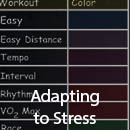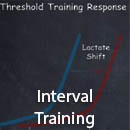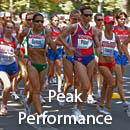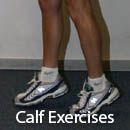Training
Introduction
Both novice and experienced race walkers face a confusing task when trying to determine a training strategy. Ask one hundred coaches for a training schedule and you get one hundred different training schedules. A race walker’s best bet is to select a training schedule that is scientifically based and well thought out. A competitor requires a good idea of what lies ahead in the months leading up to a race. Programs thrown together without forethought usually lead to uncertainty and disappointment.
I believe all training schedules need to be written with one goal in mind: a race to serve as a target for training. You may choose to participate in other races along the way, but the focus of your training must be the target goal. Focusing on too many goals leads to certain doom or at least mediocre performances. No disrespect to some old-school race walkers who promote racing every week, but doing so leads to sub-optimal performance at a given distance.

Before you undertake a training regimen, be sure you have mastered the basic race walking techniques and form. Focusing on racing before you achieve a solid technical foundation leads to shoddy, inefficient technique that slows you down, and worse: it may get you disqualified from a race.
![]()

















